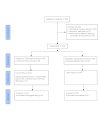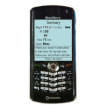Mobile phone-based telemonitoring for heart failure management: a randomized controlled trial
- PMID: 22356799
- PMCID: PMC3374537
- DOI: 10.2196/jmir.1909
Mobile phone-based telemonitoring for heart failure management: a randomized controlled trial
Abstract
Background: Previous trials of telemonitoring for heart failure management have reported inconsistent results, largely due to diverse intervention and study designs. Mobile phones are becoming ubiquitous and economical, but the feasibility and efficacy of a mobile phone-based telemonitoring system have not been determined.
Objective: The objective of this trial was to investigate the effects of a mobile phone-based telemonitoring system on heart failure management and outcomes.
Methods: One hundred patients were recruited from a heart function clinic and randomized into telemonitoring and control groups. The telemonitoring group (N = 50) took daily weight and blood pressure readings and weekly single-lead ECGs, and answered daily symptom questions on a mobile phone over 6 months. Readings were automatically transmitted wirelessly to the mobile phone and then to data servers. Instructions were sent to the patients' mobile phones and alerts to a cardiologist's mobile phone as required.
Results: Baseline questionnaires were completed and returned by 94 patients, and 84 patients returned post-study questionnaires. About 70% of telemonitoring patients completed at least 80% of their possible daily readings. The change in quality of life from baseline to post-study, as measured with the Minnesota Living with Heart Failure Questionnaire, was significantly greater for the telemonitoring group compared to the control group (P = .05). A between-group analysis also found greater post-study self-care maintenance (measured with the Self-Care of Heart Failure Index) for the telemonitoring group (P = .03). Brain natriuretic peptide (BNP) levels, self-care management, and left ventricular ejection fraction (LVEF) improved significantly for both groups from baseline to post-study, but did not show a between-group difference. However, a subgroup within-group analysis using the data from the 63 patients who had attended the heart function clinic for more than 6 months revealed the telemonitoring group had significant improvements from baseline to post-study in BNP (decreased by 150 pg/mL, P = .02), LVEF (increased by 7.4%, P = .005) and self-care maintenance (increased by 7 points, P = .05) and management (increased by 14 points, P = .03), while the control group did not. No differences were found between the telemonitoring and control groups in terms of hospitalization, mortality, or emergency department visits, but the trial was underpowered to detect differences in these metrics.
Conclusions: Our findings provide evidence of improved quality of life through improved self-care and clinical management from a mobile phone-based telemonitoring system. The use of the mobile phone-based system had high adherence and was feasible for patients, including the elderly and those with no experience with mobile phones.
Trial registration: ClinicalTrials.gov NCT00778986.
Conflict of interest statement
None
Figures
References
-
- Clark RA, Inglis SC, McAlister FA, Cleland JG, Stewart S. Telemonitoring or structured telephone support programmes for patients with chronic heart failure: systematic review and meta-analysis. BMJ. 2007 May 5;334(7600):942. doi: 10.1136/bmj.39156.536968.55. http://www.bmj.com/cgi/pmidlookup?view=long&pmid=17426062bmj.39156.536968.55 - DOI - PMC - PubMed
-
- Koehler F, Winkler S, Schieber M, Sechtem U, Stangl K, Böhm M, Boll H, Baumann G, Honold M, Koehler K, Gelbrich G, Kirwan BA, Anker SD, Telemedical Interventional Monitoring in Heart Failure Investigators Impact of remote telemedical management on mortality and hospitalizations in ambulatory patients with chronic heart failure: the telemedical interventional monitoring in heart failure study. Circulation. 2011 May 3;123(17):1873–80. doi: 10.1161/CIRCULATIONAHA.111.018473.CIRCULATIONAHA.111.018473 - DOI - PubMed
Publication types
MeSH terms
Associated data
LinkOut - more resources
Full Text Sources
Medical




